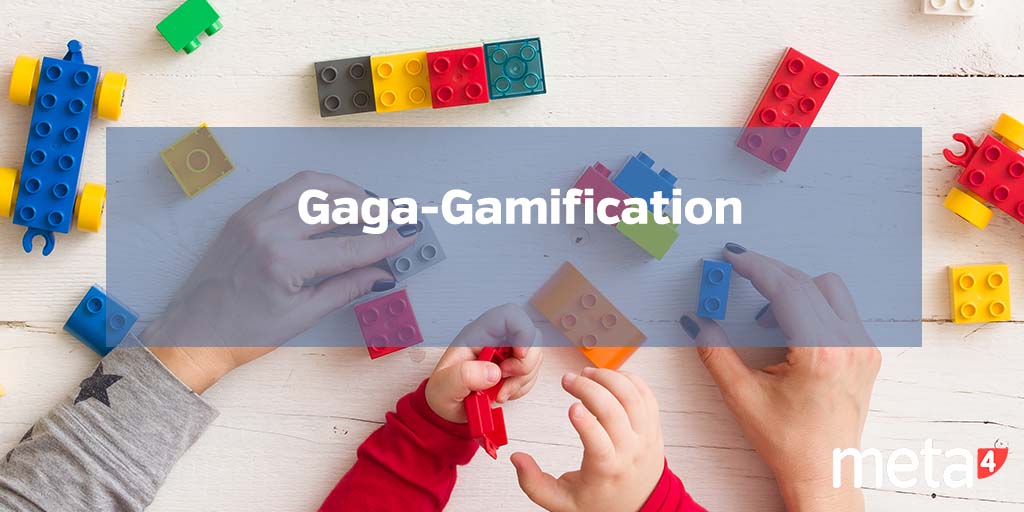Gamification? What’s that? Does the Latin suffix “fication” mean this is about making a game of whales or a social meeting of mariners at sea? I suppose that’s what might have crossed our minds when we first heard this dark and mysterious word and if we are lucky enough to know something of the nautical world. Or does it have to do with a variant of dodge ball called gaga which is an increasingly popular game at summer camps? Actually it is none of these! In this article I will share a little of what I have gleaned. Hopefully it will enlighten us all a bit!
The idea of gamification isn’t in fact that complicated: it is the action of applying gaming dynamics and mechanisms to situations/work/applications that aren’t games. These dynamics and mechanisms are inherent to all games: achievements, competition, compensations, points, levels, rewards, etc.
Of course this has infinite derivations, from a purely conceptual point of view (like competing for something) to a more technological one, where “gamification” may be a synonym for “videogamification” the way we can find in some Facebook applications that hook you into commercial products via games, like SuperMario in 2D… and actually, it is in this latter sense that we often refer to gamification.
Following this idea, we see a growing trend among consumer companies that use “gamification” to engage customers and increase their loyalty, two things that are highly valued in marketing. It is true that in this sense this may be an original solution to combine advertising and social networking. You can take a deeper look into this white paper from Useful Social Media.
GAMIFICATION AND RECOGNITION SYSTEMS
In the HR software world, when it comes to “gamification”, the experts usually relate it to recognition systems in the first place, and thus to the world of talent management, career plans and compensation. Inside the recently published Gartner’s 2012 Hype Cycle for Human Capital Software, Thomas Otter urges professionals to research this concept in relation to Employee Social Recognition Systems (These systems are trending upwards, although he warns that these recognition systems may not be applied in all geographies, nor should they substitute traditional compensation practices. They should rather complement the existing policies and be aligned with the business goal.)
If we were to apply gamification structures to these recognition systems, the most visible outcome would probably be a change in communication (and perhaps for this reason gamification and social media have been linked together: achievements, career plans and compensation become more “social” (in terms of time: greater speed of making achievements known to the rest of the employees) and visible throughout the company.
As shown in this article – Gamification for HR from “Five Whys”, the positive side this is to make a continuous assessment throughout the year and and engage all company employees, while enhancing interdepartmental communications. This can be attractive but be careful that this doesn’t lead to an excessively “competitive work environment and bestow more importance on quantifiable achievements (arriving at work on time, not taking so many days off), over and above the more subjective ones (such as being a good influence for the group, willingness to learn new things, etc.).
Naomi Bloom also weighs the advantages and disadvantages of “gamification”. She recognizes that the mobile/social and global trends are opening up new possibilities, but she is also concerned that gamification is used with excessive fervour and frivolity, simplifying evaluations and rendering them ridiculous, something she calls “mechugasification”. You can check out the full article here.
Well, as you can see, when I started this post I pointed out that this topic wasn’t so complex, but when you start to see the possible applications of gamification, you can go crazy! As I said in the beginning, if “gamification” is changingthe way of we interactwith something via game dynamics, the possibilities are endless….. From appointing the employee of the month to any learning test, competition dynamics applied to the workplace and its possible “socialization”, through to an objectives and achievement system for the sales force. Personally I find “gamification” particularly interesting when applied to learning. Experimenting in this context, you mustn’t miss out our SaaS crossword puzzle in the next post!
To read more….
- An Introduction to Gamification, Useful SocialMedia, http://www.usefulgamification.com/gamification-intro.pdf
- Gamification for HR, FiveWhys, http://fivewhys.wordpress.com/2012/06/18/gamification-for-hr/
- Gamification: Three Ways To Use Gaming For Recruiting, Training, and Health & Wellness, Forbes, http://www.forbes.com/sites/jeannemeister/2012/05/21/gamification-three-ways-to-use-gaming-for-recruiting-training-and-health-amp-wellness/2/
- #Consumerization, #Gamification and #Mechugasification, InFullBloom, http://infullbloom.us/?p=2504
- Let’s Gamify Referral Programs! – Part 1, Good Job, http://blog.gooodjob.com/2012/06/lets-gamify-referral-programs-part-1/
- Gamification: Three Ways To Use Gaming For Recruiting, Training, and Health & Wellness, Forbes, http://www.forbes.com/sites/jeannemeister/2012/05/21/gamification-three-ways-to-use-gaming-for-recruiting-training-and-health-amp-wellness/
- Hype Cycle for Human Capital Management, 2012, Gartner, http://www.gartner.com/technology/research/hype-cycles/






